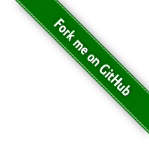NVIDIA-docker Cheatsheet
TensorFlow Docker requirements
- Install Docker on your local host machine.
- For GPU support on Linux, install nvidia-docker.
Note: To run the docker command without sudo, create the docker group and add your user. For details, see the post-installation steps for Linux.
Download a TensorFlow Docker image
The official TensorFlow Docker images are located in the tensorflow/tensorflow Docker Hub repository. Image releases are tagged using the following format:
| Tag | Description |
|---|---|
latest |
The latest release of TensorFlow CPU binary image. Default. |
nightly |
Nightly builds of the TensorFlow image. (unstable) |
version |
Specify the version of the TensorFlow binary image, for example: 1.14.0 |
devel |
Nightly builds of a TensorFlow master development environment. Includes TensorFlow source code. |
Each base tag has variants that add or change functionality:
| Tag Variants | Description |
|---|---|
tag-gpu |
The specified tag release with GPU support. (See below) |
tag-py3 |
The specified tag release with Python 3 support. |
tag-jupyter |
The specified tag release with Jupyter (includes TensorFlow tutorial notebooks) |
You can use multiple variants at once. For example, the following downloads TensorFlow release images to your machine:
docker pull tensorflow/tensorflow # latest stable releasedocker pull tensorflow/tensorflow:devel-gpu # nightly dev release w/ GPU supportdocker pull tensorflow/tensorflow:latest-gpu-jupyter # latest release w/ GPU support and Jupyter
Start a TensorFlow Docker container
To start a TensorFlow-configured container, use the following command form:
docker run [-it] [--rm] [-p hostPort:containerPort] tensorflow/tensorflow[:tag] [command]
For details, see the docker run reference.
Examples using CPU-only images
Let's verify the TensorFlow installation using the latest tagged image. Docker downloads a new TensorFlow image the first time it is run:
docker run -it --rm tensorflow/tensorflow \
python -c "import tensorflow as tf; tf.enable_eager_execution(); print(tf.reduce_sum(tf.random_normal([1000, 1000])))"
Success: TensorFlow is now installed. Read the tutorials to get started.
Let's demonstrate some more TensorFlow Docker recipes. Start a bash shell session within a TensorFlow-configured container:
docker run -it tensorflow/tensorflow bash
Within the container, you can start a python session and import TensorFlow.
To run a TensorFlow program developed on the host machine within a container, mount the host directory and change the container's working directory (-v hostDir:containerDir -w workDir):
docker run -it --rm -v $PWD:/tmp -w /tmp tensorflow/tensorflow python ./script.py
Permission issues can arise when files created within a container are exposed to the host. It's usually best to edit files on the host system.
Start a Jupyter Notebook server using TensorFlow's nightly build with Python 3 support:
docker run -it -p 8888:8888 tensorflow/tensorflow:nightly-py3-jupyter
Follow the instructions and open the URL in your host web browser: http://127.0.0.1:8888/?token=...
GPU support
Docker is the easiest way to run TensorFlow on a GPU since the host machine only requires the NVIDIA® driver (the NVIDIA® CUDA® Toolkit is not required).
Install nvidia-docker to launch a Docker container with NVIDIA® GPU support. nvidia-docker is only available for Linux, see their platform support FAQ for details.
Check if a GPU is available:
lspci | grep -i nvidia
Verify your nvidia-docker installation:
docker run --runtime=nvidia --rm nvidia/cuda nvidia-smi
Note: nvidia-docker v1 uses the nvidia-docker alias, where v2 uses docker --runtime=nvidia.
Examples using GPU-enabled images
Download and run a GPU-enabled TensorFlow image (may take a few minutes):
docker run --runtime=nvidia -it --rm tensorflow/tensorflow:latest-gpu \
python -c "import tensorflow as tf; tf.enable_eager_execution(); print(tf.reduce_sum(tf.random_normal([1000, 1000])))"
It can take a while to set up the GPU-enabled image. If repeatably running GPU-based scripts, you can use docker execto reuse a container.
Use the latest TensorFlow GPU image to start a bash shell session in the container:
docker run --runtime=nvidia -it tensorflow/tensorflow:latest-gpu bash

如果这篇文章帮助到了你,你可以请作者喝一杯咖啡




 浙公网安备 33010602011771号
浙公网安备 33010602011771号